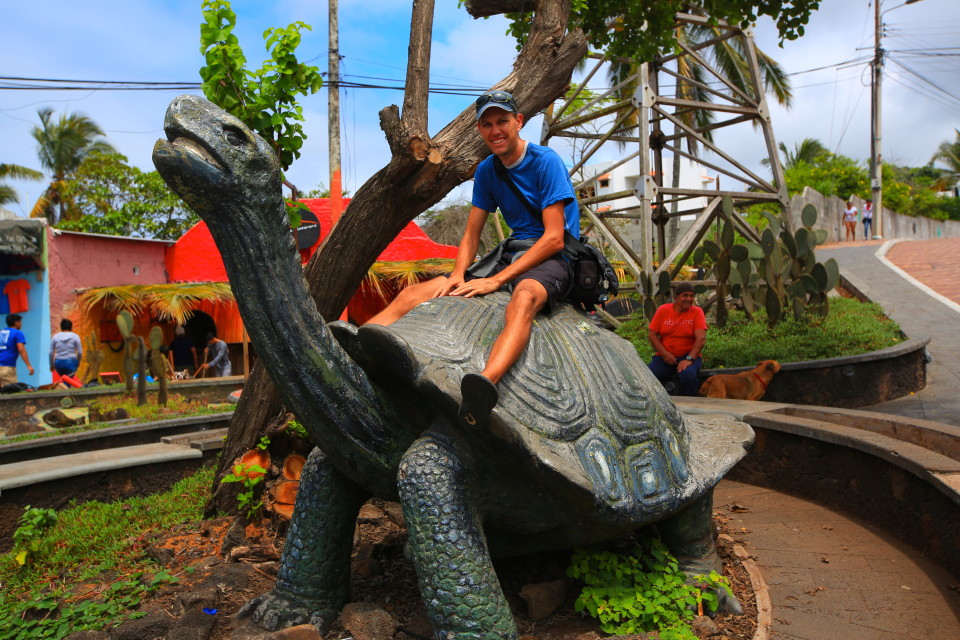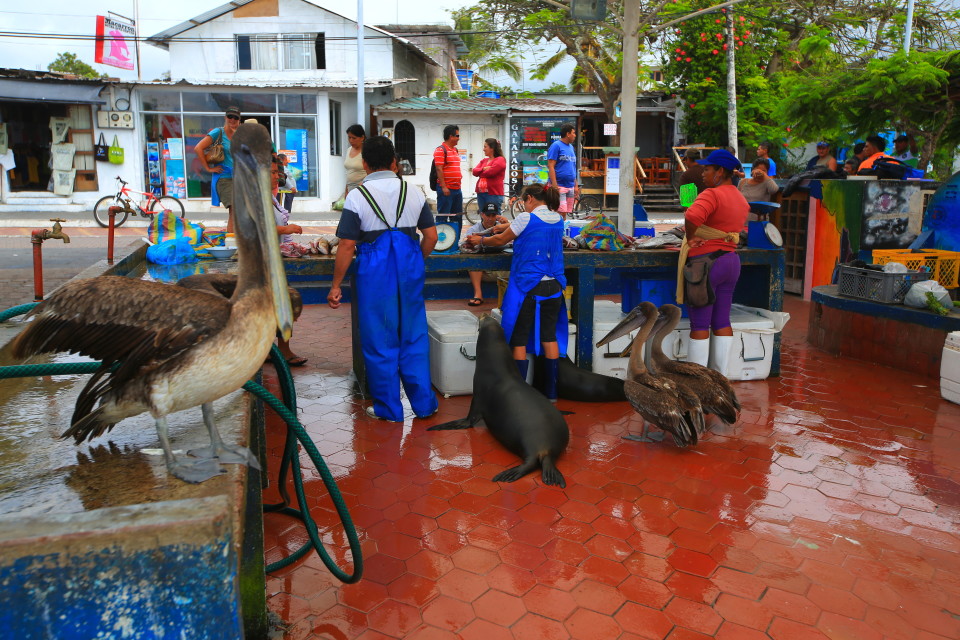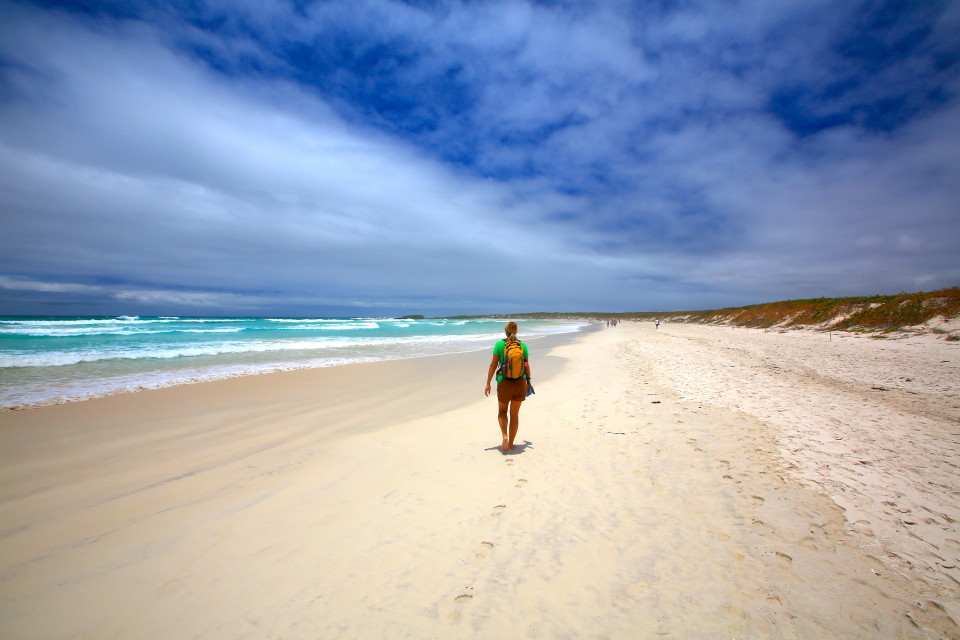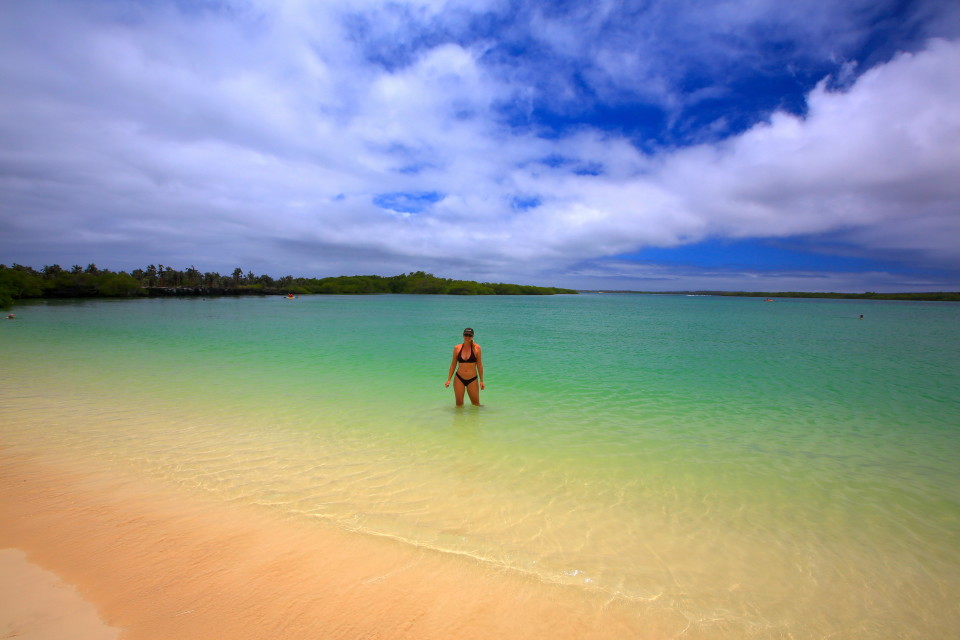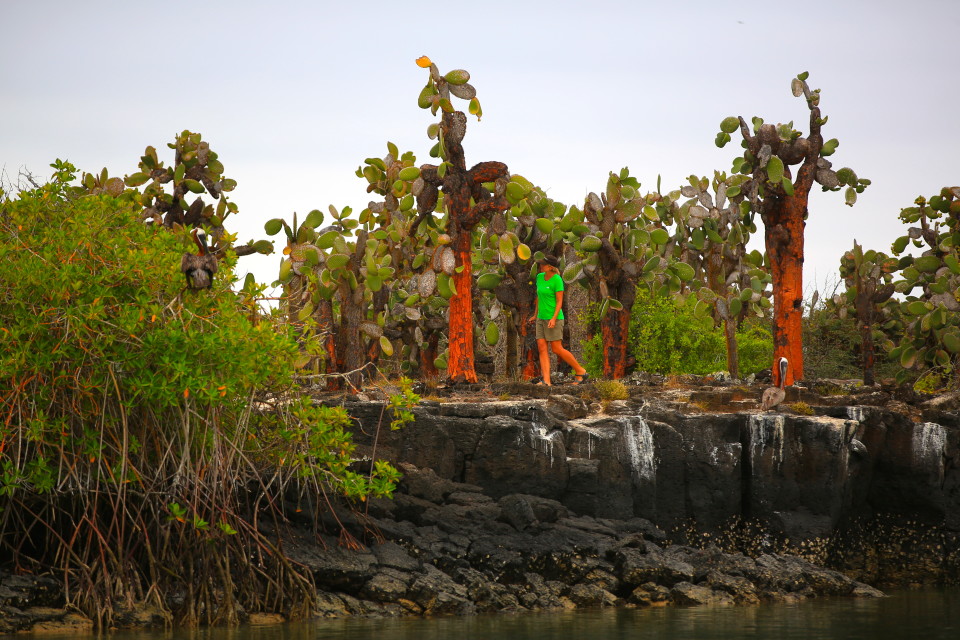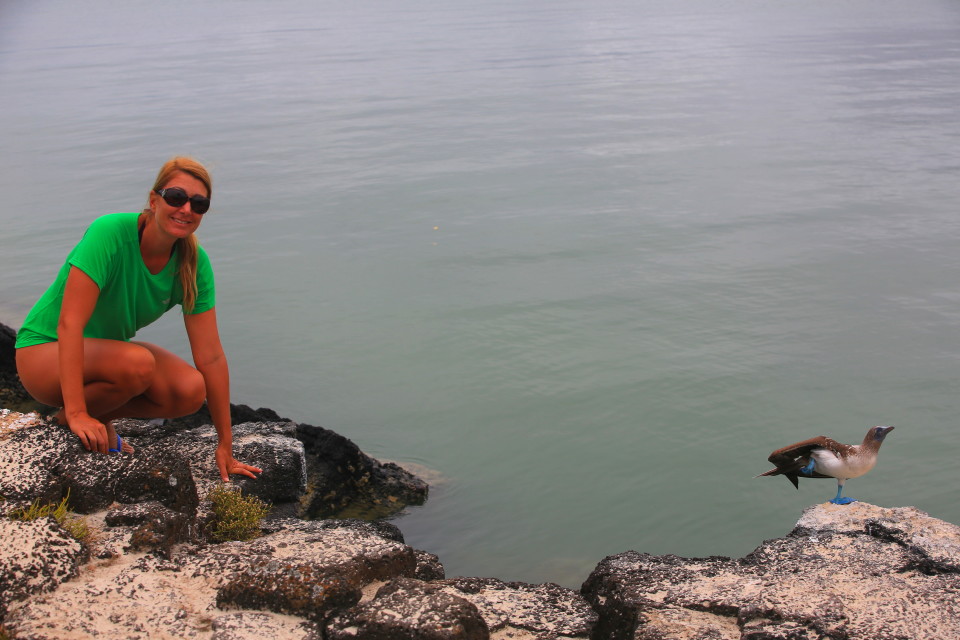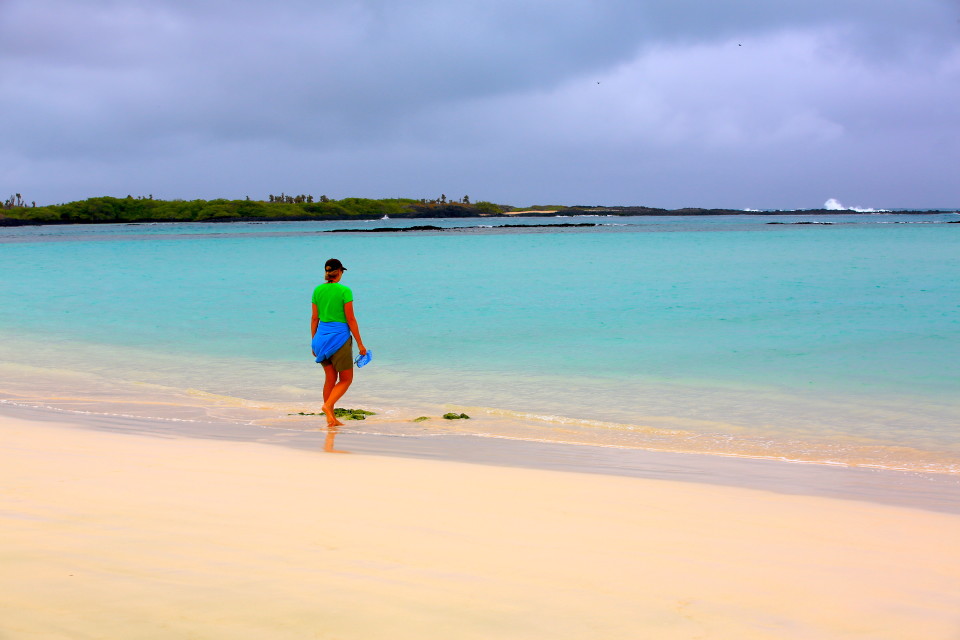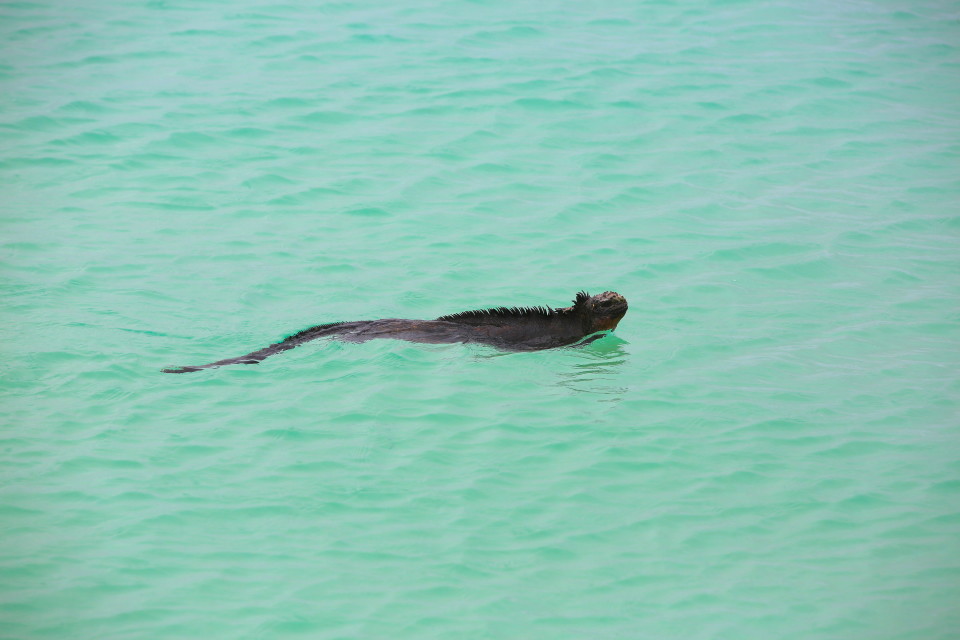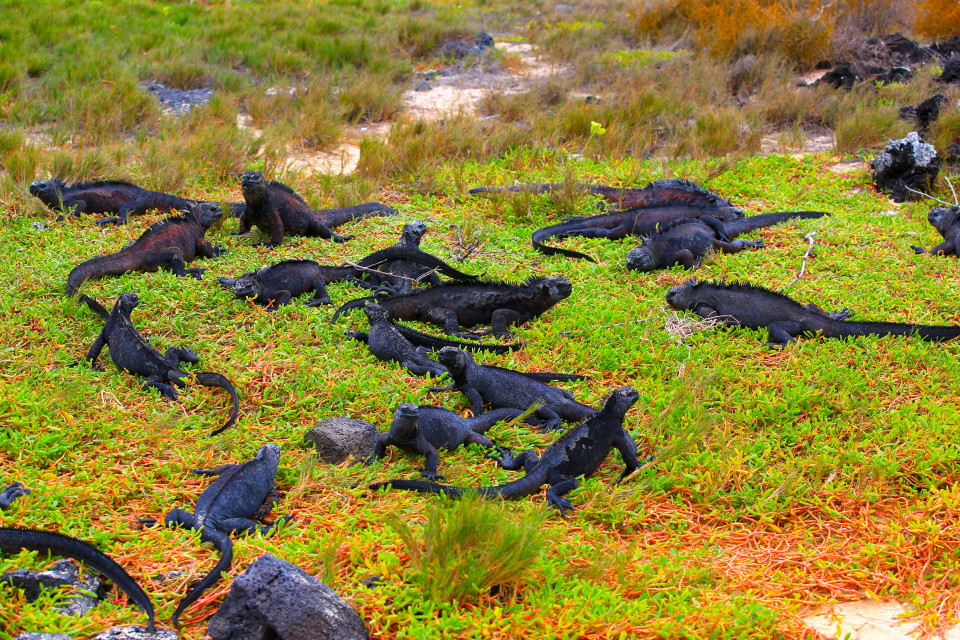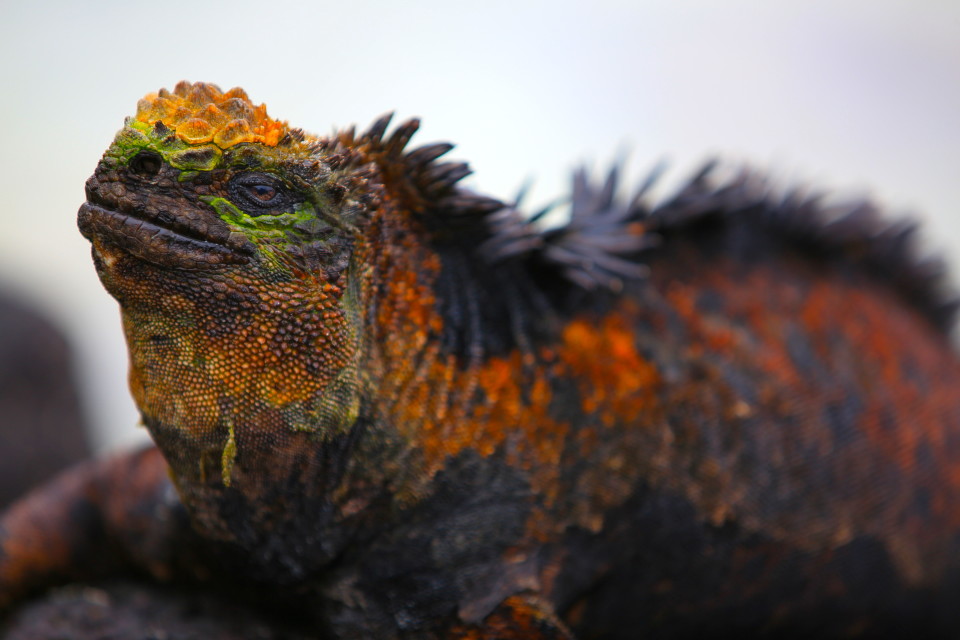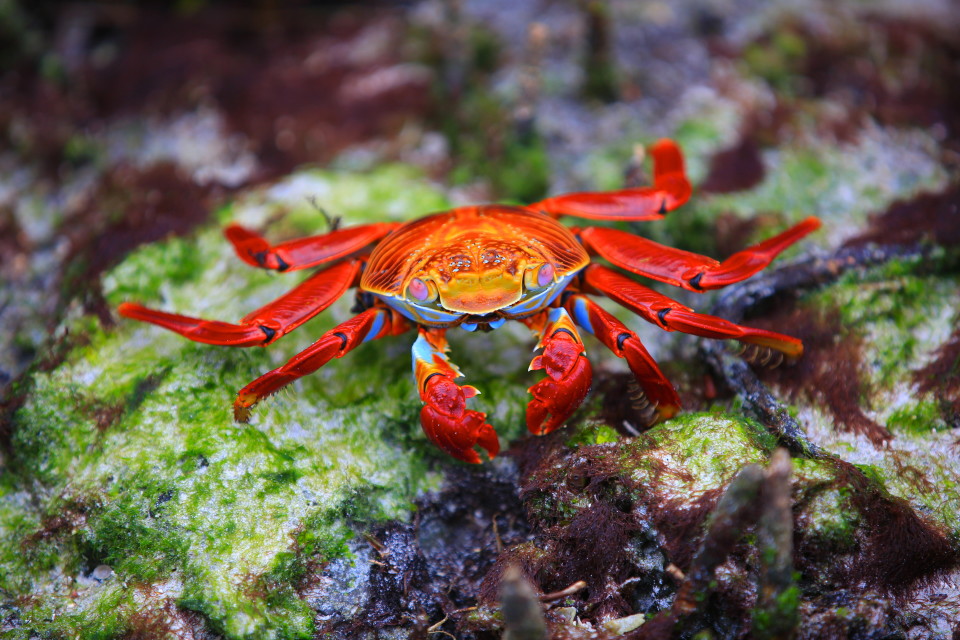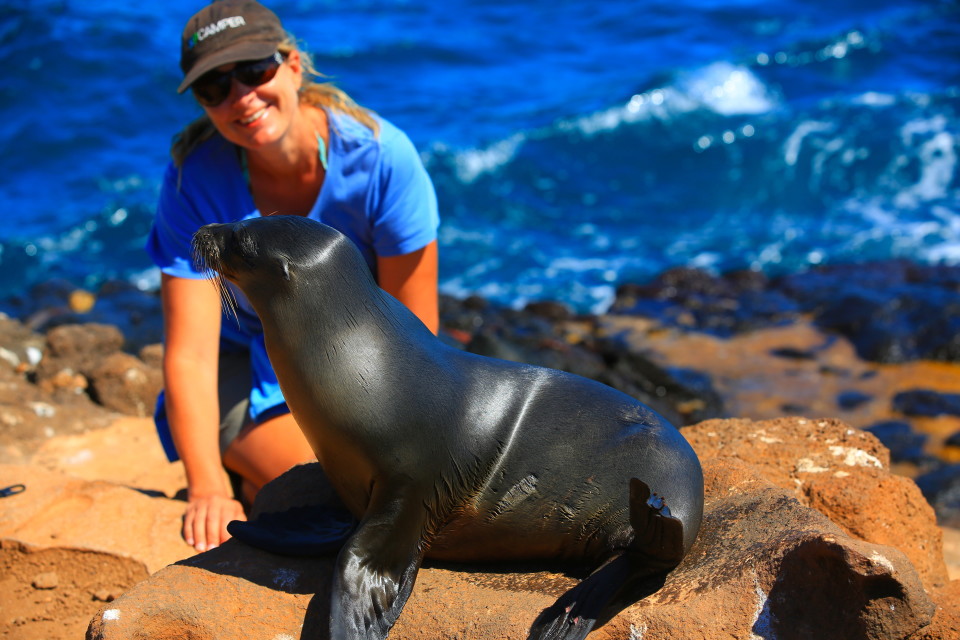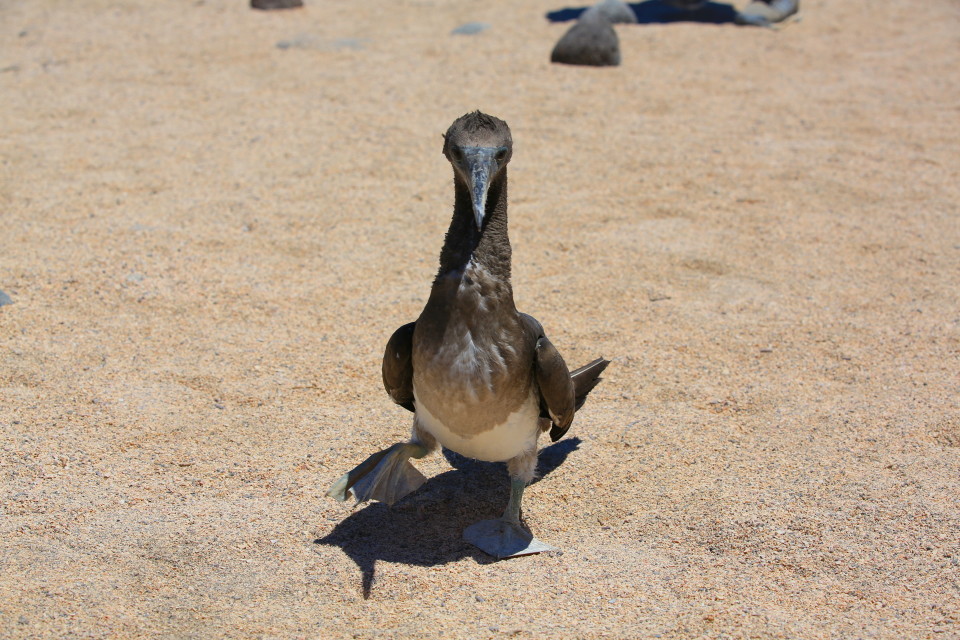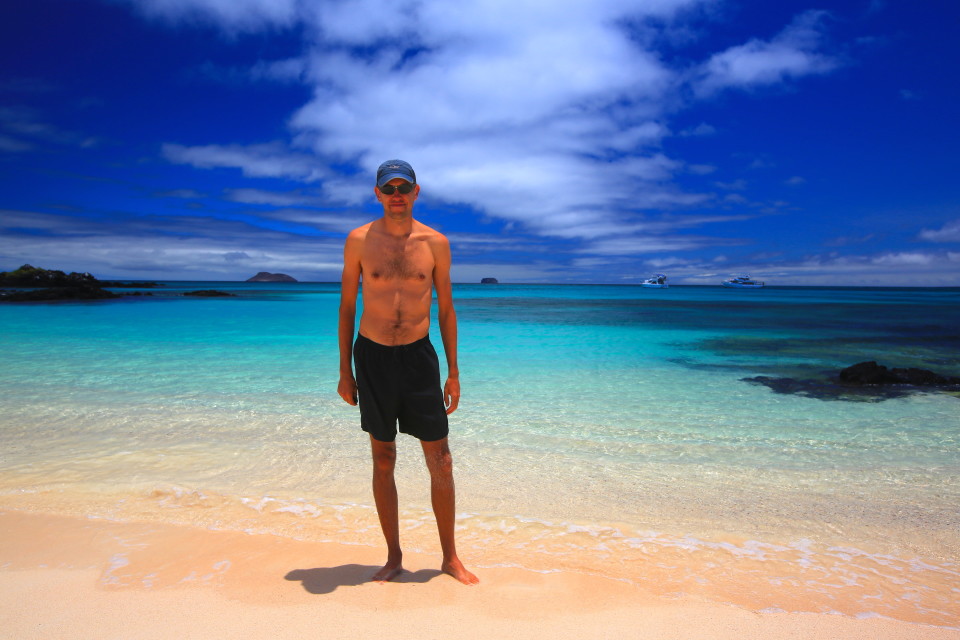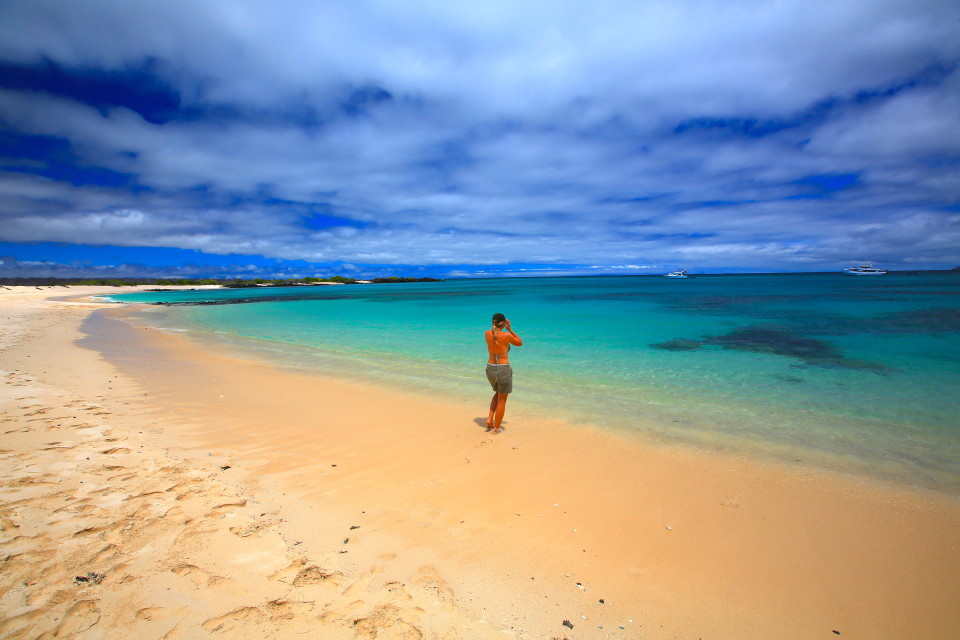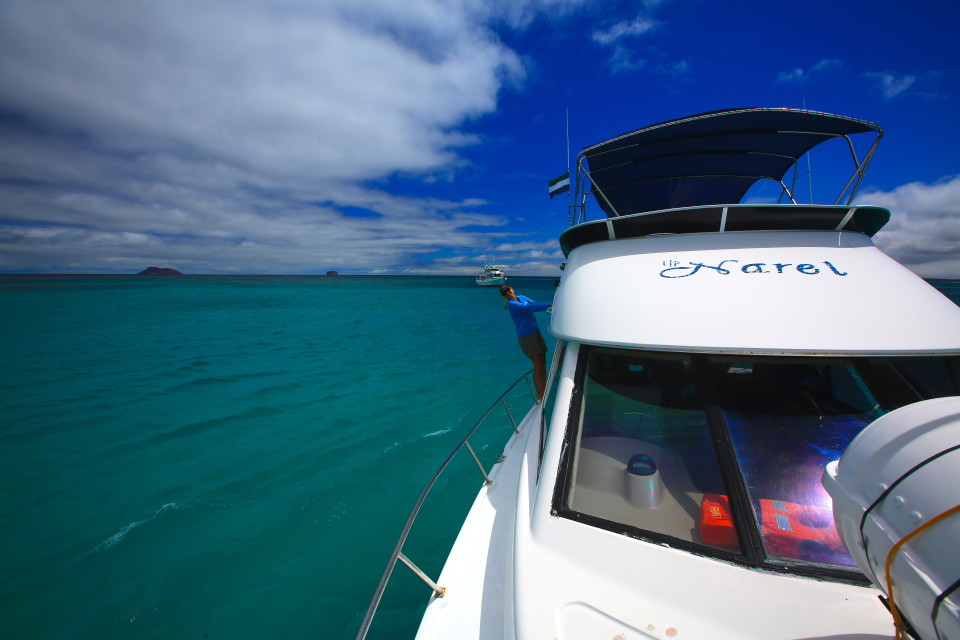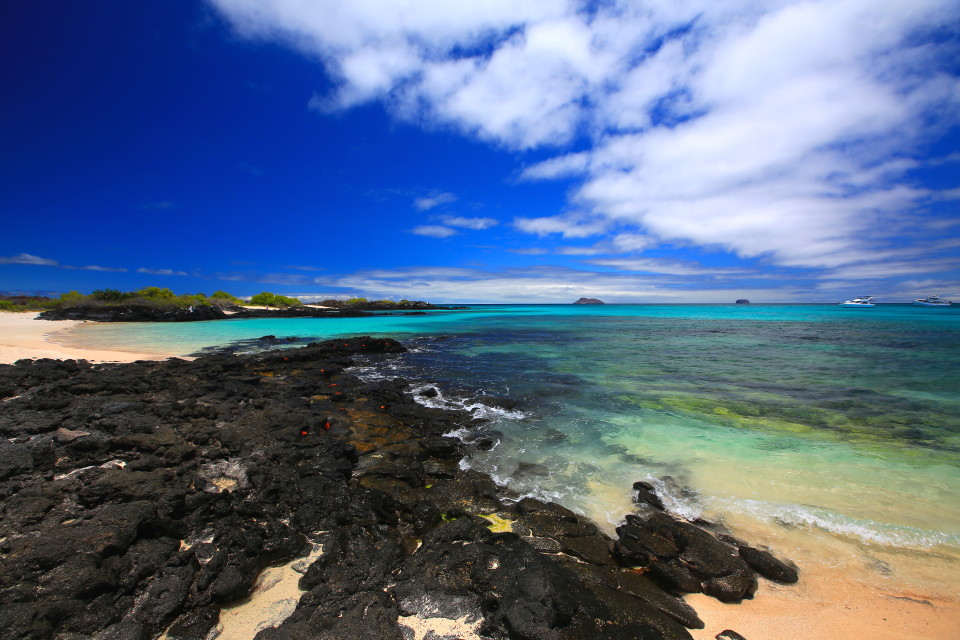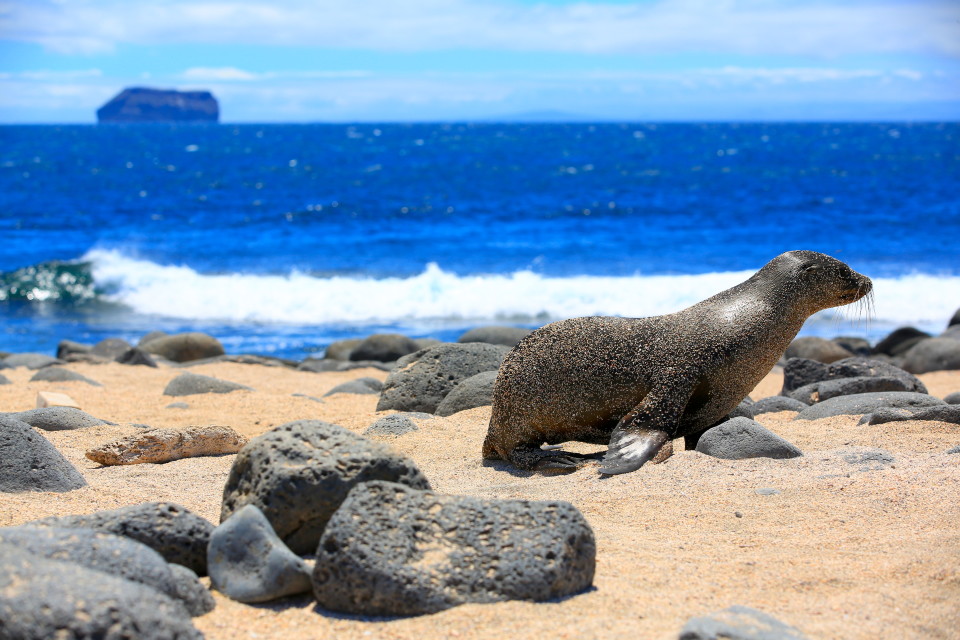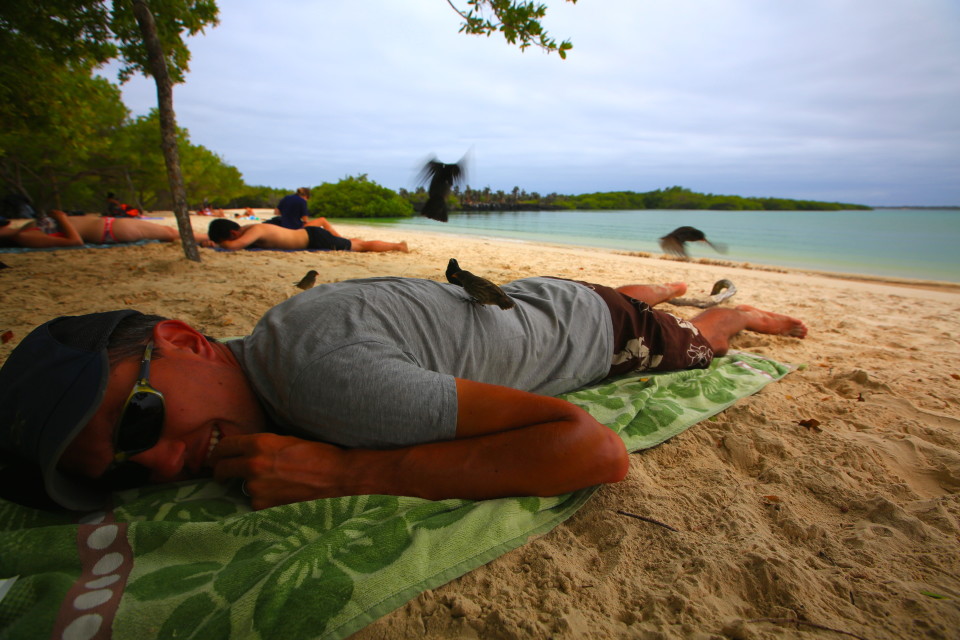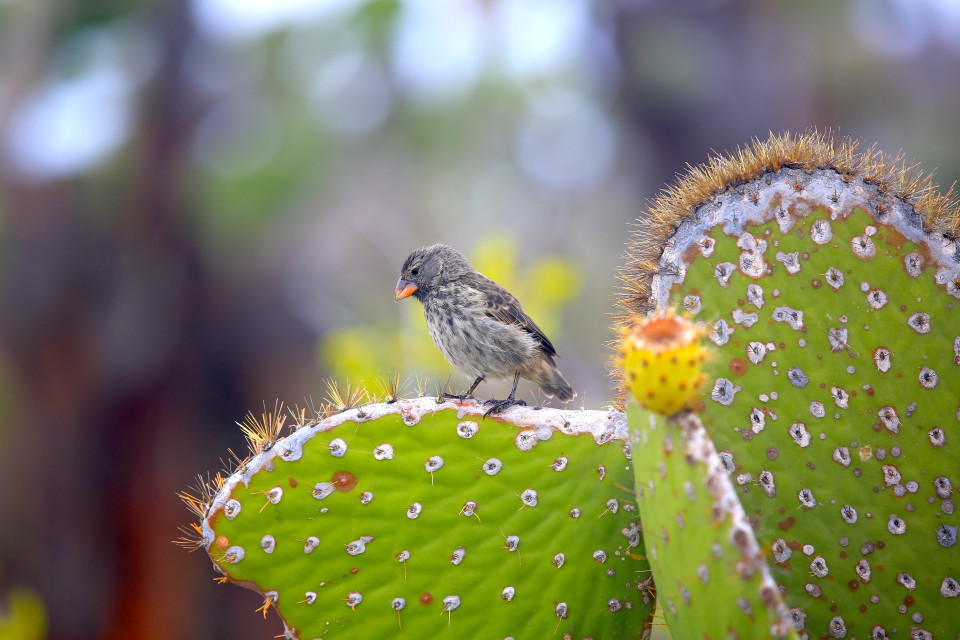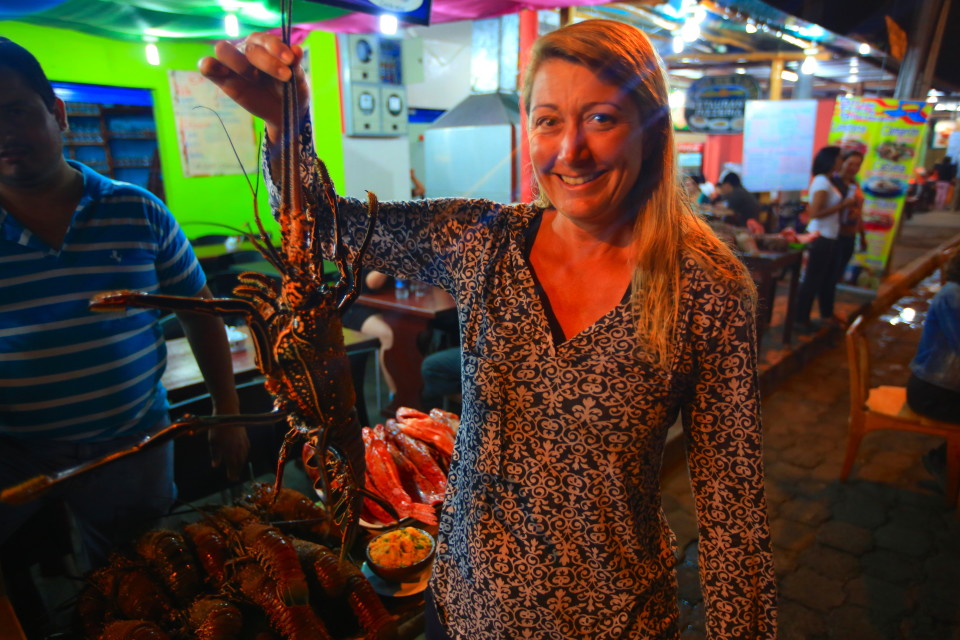Santa Cruz island is the hub for most of the boat tours in the Galapagos and it is the place you should come to if you are trying to book a last minute cruise (they are advertised everywhere). It is also the best island for booking day trips to other islands if you are doing a land based tour of the Galapagos. Santa Cruz is very touristy compared to the Isabela and San Cristobal (and our least favorite of the three), however, even with all the gringos and tacky souvenir shops, there are still stunning beaches, lots of good restaurants, the Darwin research center and many great day trips available to other islands.
Santa Cruz Island
Tortuga Bay
Our first day on Santa Cruz we walked over to Tortuga Bay which is a 45 minute walk from town and has two stunning beaches. Playa Brava, a huge stretch of white sand beach that just goes on and on, and Playa Mansa which is a protected bay surrounded by mangrove full of sting rays, manta rays and turtles. Since we were in the season where the weather fog is brought in by the cold waters of the Humbolt currents, we had slightly overcast days on Santa Cruz and a light rain, but it was always warm enough to wear shorts and when the sun did come out it was with a power so fierce we were glad for the cooler weather.

The feet are blue so they can use them is a courting dance to attract the lady boobies. The bluer the better.
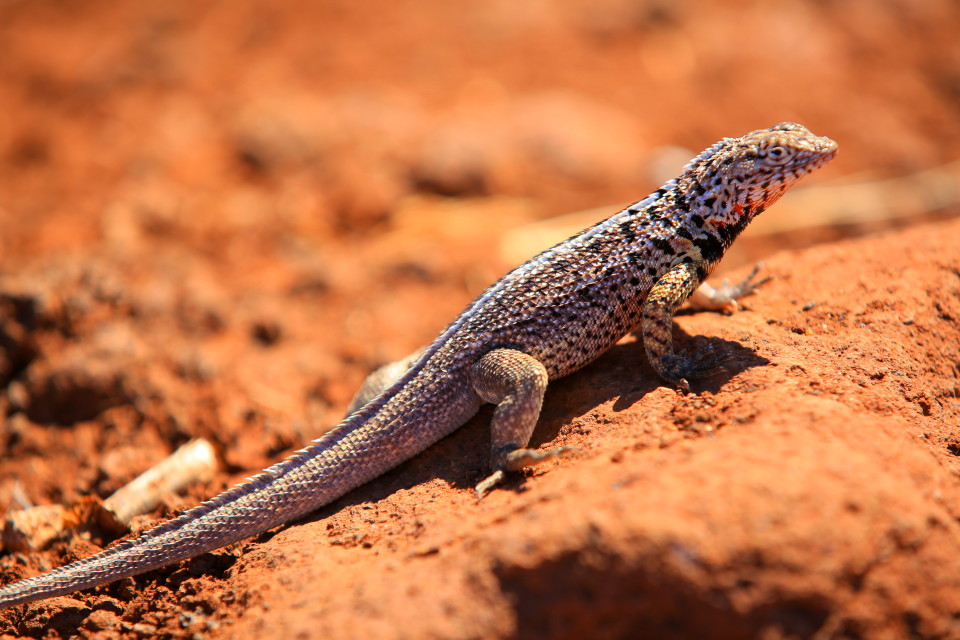
Male Lava lizards do push ups to claim their territory. The pattern of their push ups varies on each island.
Isla Santa Fe
We booked a day tour to Santa Fe island to snorkel around this island that was just pulsing with marine life. We rented an underwater GoPro to take videos and were able to capture a bit of the underwater magic world that is the Galapagos. My favorite things I saw this day were a sea lion chasing and biting a white tip reef shark, schools of tropical fish, an enormous sting ray and more green sea turtles swimming around us. The ocean on the boat ride to Santa Fe was so rough that we were all alternating whooping with joy and screaming with fear and excitement. The next time we come to the Galapagos we will definitely come when there is calm seas and warm water.
[youtube=http://www.youtube.com/watch?v=LwwBfihF7iY]
El Garrapatero
This beach has to be accessed by boat and we visited it the day we went to Santa Fe island in the afternoon. It is on the east end of Santa Cruz and again is a lovely white sand beach full of marine life, especially iguanas.
Isla Seymour Norte
We decided to book a day trip to North Seymour, a low, flat, black lava island, so we could see the magnificent frigate birds, land iguanas and nesting blue footed boobies. Touring this island felt like stepping into a National Geographic film. We were literally feet away from colonies of birds preforming mating rituals, feeding their babies, and hunting. Our park guide was very knowledgable and we both learned a ton about the animals around us. We were just awe struck at being able to be just feet away from these animals in their natural habitat without them even seeming to notice we were there. Sometimes in the Galapagos I felt like I was invisible to the animals.
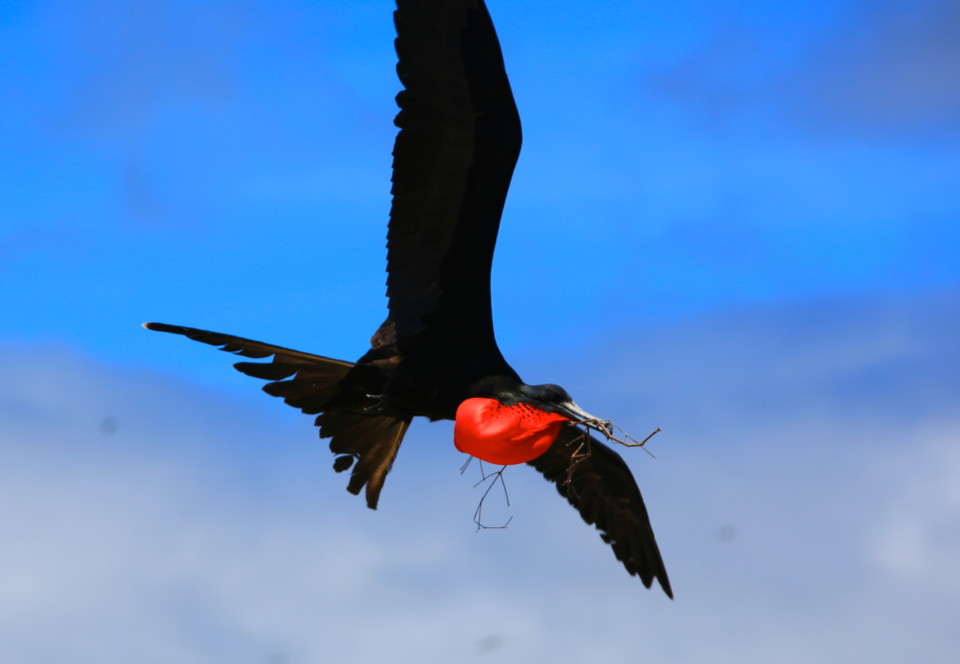
Frigate birds don’t hunt and can not go into the ocean. They get all their food by stealing it from other birds and animals on the islands. I was fascinated by that fact. They are literally dependent on the other species to survive. I don’t know why the blue footed boobies don’t revolt.
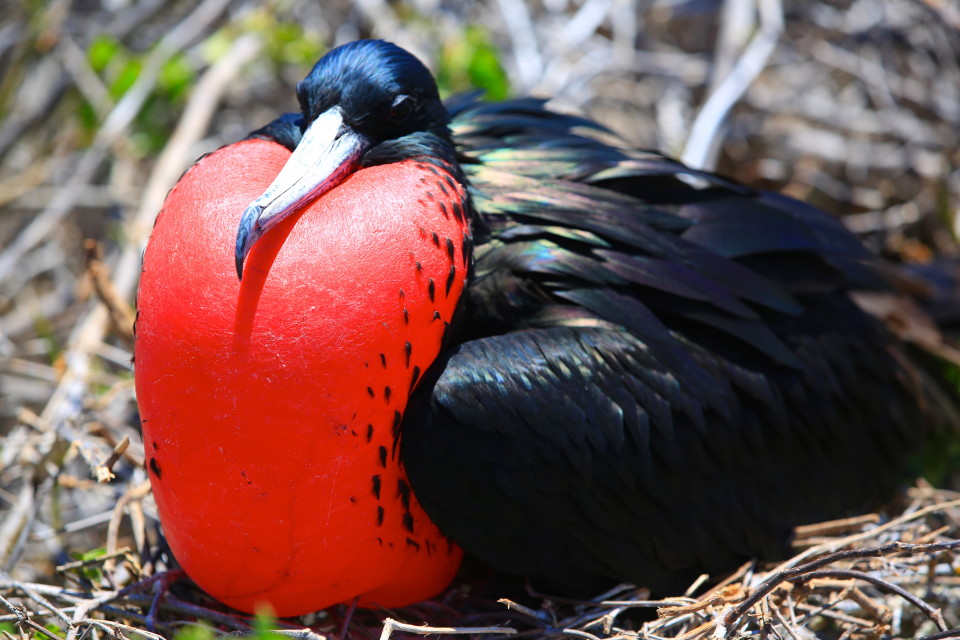
Male frigate birds inflate their red gular sac (which takes 20 minutes) to attract the ladies when they are done building a nest.
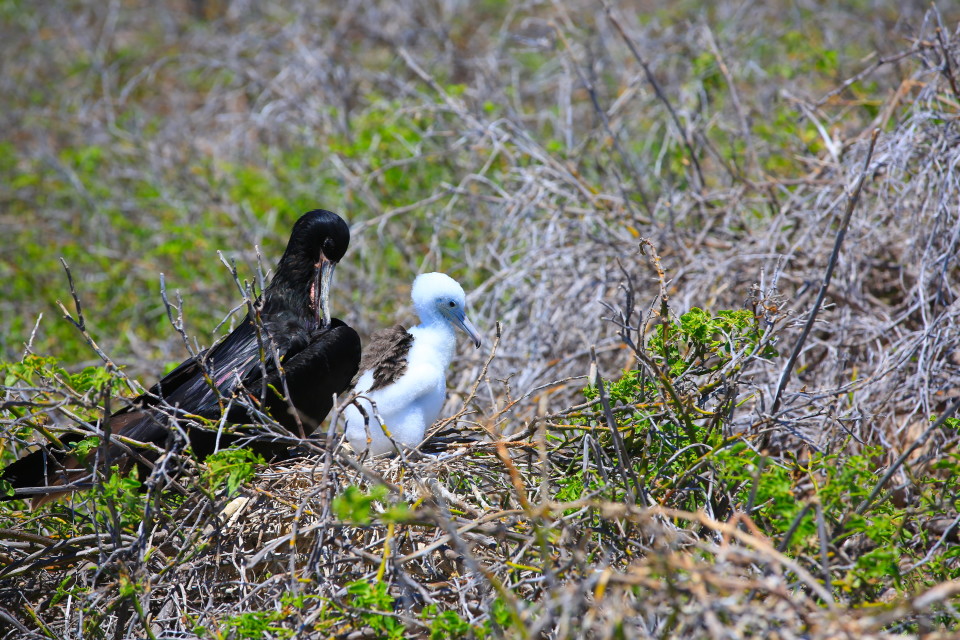
Frigate birds can only have one baby since they have to steal all their food. Their lifestyle can not support more than one offspring.
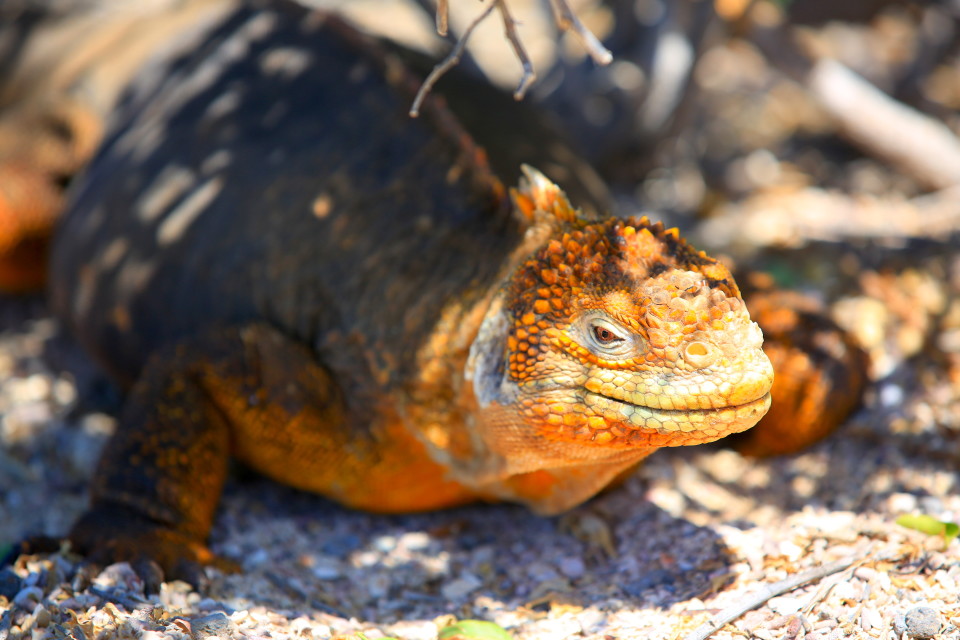
Land Iguana- Only on a few of the more remote islands, the large land iguanas (bigger than the marine ones) spend there day soaking up sun and nights burrowed into holes to maintain body temperature.
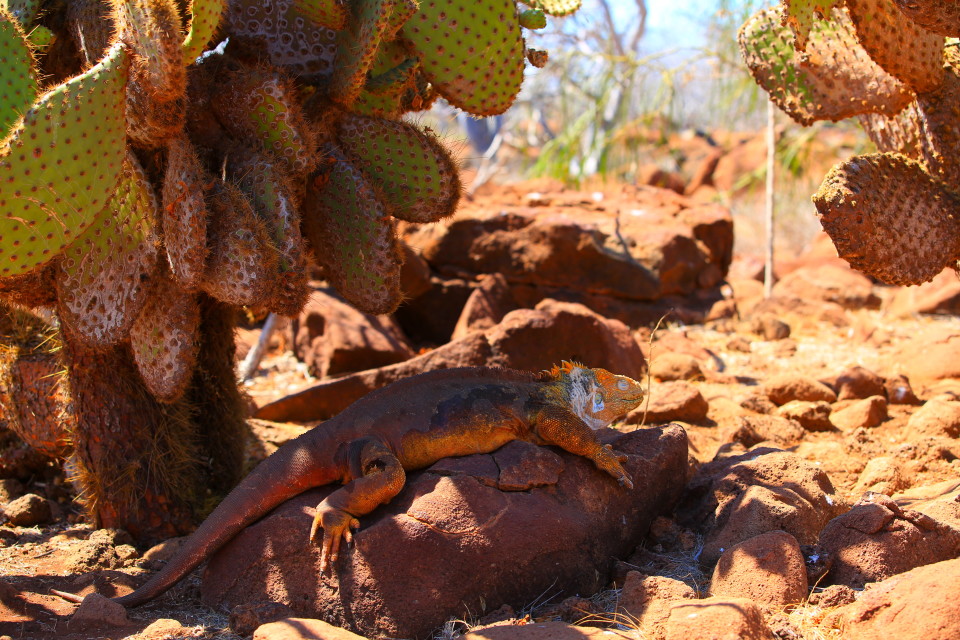
The land iguanas on North Seymour were brought over from neighboring Baltra island in the 1930s when the US made it a marine base (thus killing off all the wildlife on it). Baltra is now the main airport for the Galapagos islands.
Playa Las Bachas
The day we visited Seymour Norte our boat stopped for a few hours at this beautiful beach on the north end of Santa Cruz island. The snorkeling was not good here, but again, it was another stunning white sand beach with crystalline blue water. I think the beaches we saw in the Galapagos were some of the most beautiful we have ever seen in our travels, something we were not even expecting when we booked our trip.
Isla Daphne Mayor and Isla Daphne Menor
Across from North Seymour are the two Daphne islands. These islands are not visited by tourists often, but Sam and I were both really excited to see them because before we came to the Galapagos we both read the Pulitzer Prize winning book The Beak of the Finch about the finches on these two islands. Peter and Rosemary Grant have been studying the finches on Daphne Menor for over 30 years, and the results of their studies will change the way you think about the evolutionary process. It was a fascinating book, and Sam and I never got tired of seeing finches in the Galapagos and looking at their beaks (which did vary dramatically by island).
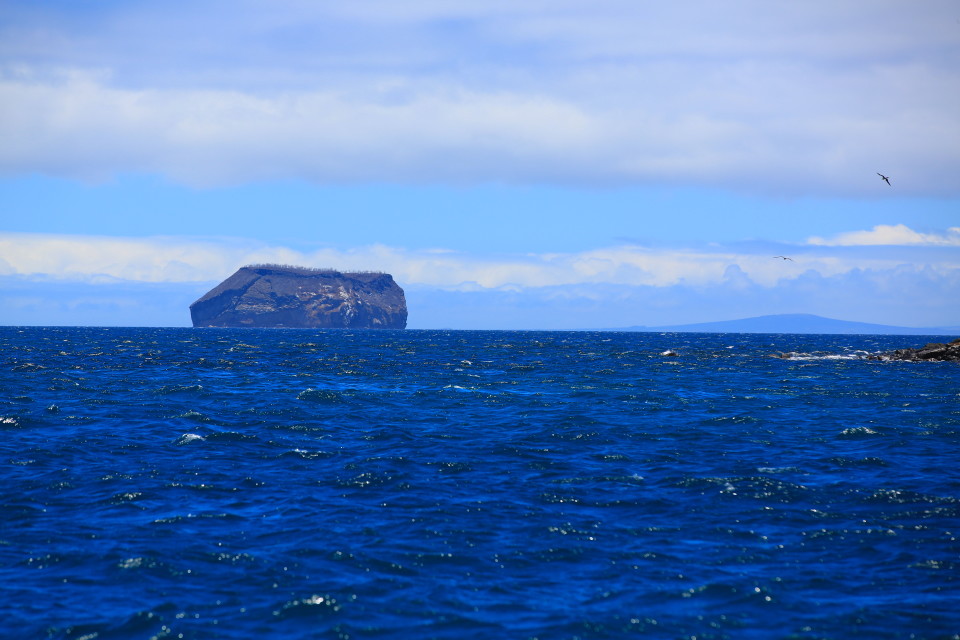
Daphne from our boat. I can’t believe the researchers have been living here on and off for 30 years.
Our last night on Santa Cruz before flying back to the mainland we splurged on GIANT lobsters, fresh from the ocean. The Galapagos were a place I am sure we will come back to one day, I feel like we just scratched the surface of this special place.














